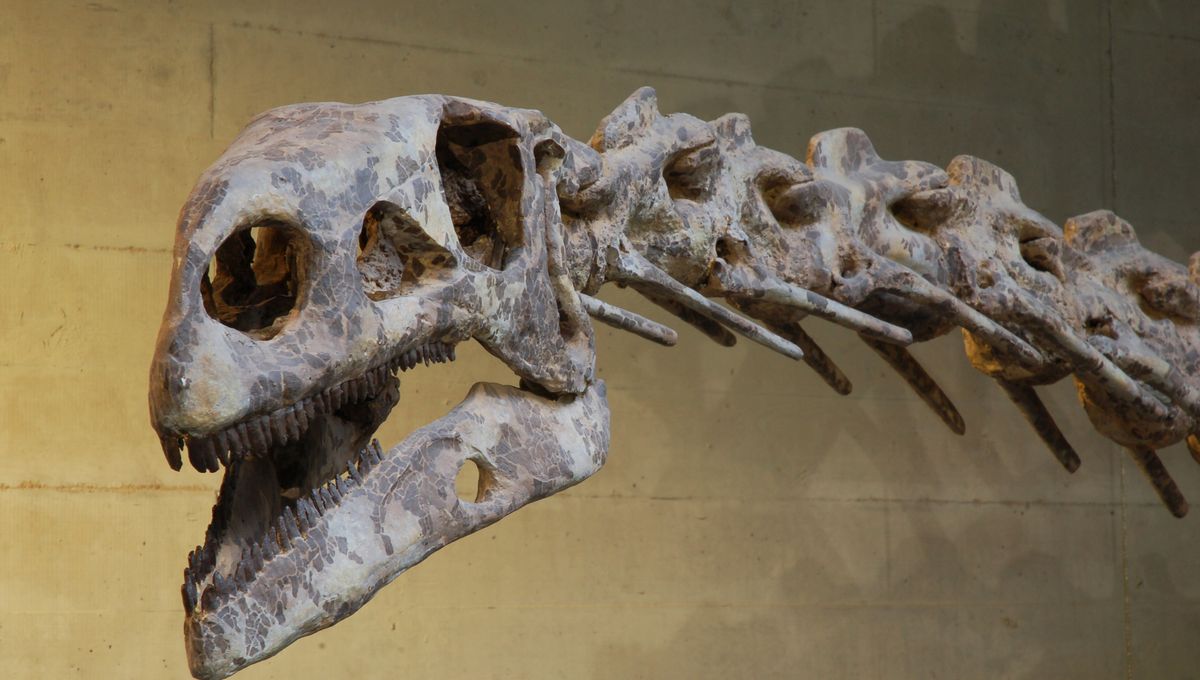
Ever wanted to find a dinosaur? After all, as your favorite conspiracy theorists have asked, if they existed, then surely their bones would be everywhere – so how much work would it take to dig one up?
Well, it depends where you are. In England, where the first dinosaur fossils were found and categorized, there are places where you can almost trip over them. In other places, a little digging is required – but often, not much.
“When we go out, we’re looking for rocks of the right age that we know might have dinosaur fossils in them. So that’s rocks from the Mesozoic Era – from the Triassic, Jurassic or Cretaceous periods,” explained Paul Barrett, a dinosaur researcher at the UK’s Natural History Museum.
“We look at geological maps to see where these types of rocks are appearing. Then when we go to those places, there should be some chance of finding a dinosaur.”
Usually, though, those rocks aren’t all that far down. “It does come down to luck: the dinosaur fossils have to have been eroded out at the surface so that you can see at least a little bit of it poking out,” Barrett said – so “we spend a lot of time walking around, looking at the floor.”
But are they all found so close to the surface? Certainly not. In one very notable case, a dinosaur fossil was found thousands of meters underground – plus a few hundred meters of ocean to boot.
“In 1997 a bone fragment was identified […] in a core from the Snorre Field well,” begins a 2006 paper detailing the record-breaking find. The field lies within the Late Triassic Lunde Formation, it explains, which now lies in the northern part of the Norwegian North Sea.
“Several thousands of meters of fluvial sediments were deposited in this basin during a thermal subsidence phase following Late Permian to Early Triassic rifting,” the authors explain. That places it a little too early for many dinosaur fossils – they didn’t become the dominant group of animals on Earth until the Jurassic period, about 50 million years later.
But there were a few species that popped up in the late Triassic, and it’s one of these that was unearthed by the undersea drilling in 1997. Found at a depth of 2,256 meters (7,402 feet) below the seabed – or 2,615 meters (8,579 feet) below sea level – “the bone […] represents a prosauropod longbone,” the paper concludes, and “the histology of the skeletal fragment is so like the German Norian material of the prosauropod dinosaur Plateosaurus that we assign it with confidence to this genus.”
As a Plateosaurus, this dinosaur would have looked kind of weird compared to what you’ve seen in Jurassic Park. It was an early sauropodomorph, meaning it was an ancestor of the huge, long-necked herbivores like Apatosaurus or Argentinosaurus – but rather than being four-legged, they were bipedal, with strong arms and dexterous hands. They stood up to 10 meters (33 feet) tall, and weighed as much as 4,000 kilograms (8,800 pounds) – so it’s perhaps surprising that the fossil found was an itty-bitty 4 centimeters (1.6 inches) in diameter.
They were a European dinosaur, living in what is now Central and Northern Europe – examples of the genus have been found in Switzerland and France, and so many in southwestern Germany that it’s sometimes nicknamed the Schwäbischer Lindwurm, or “Swabian lindwyrm”, in that country.
The one found all those kilometers below the ocean, however, was the first evidence of Plateosaurus found in Norway. In fact, it was the first dinosaur fossil full stop found in Norway.
And it was only through a string of coincidences that it was discovered at all – an ultra-rare find, identified only because it found its way to the right researcher. “It really was a lucky draw,” Jørn Hurum, the palaeontologist at the University of Oslo’s Natural History Museum in Norway who identified the fossil as Plateosaurus, told Nature News in 2006.
“It’s like finding a needle in 10 haystacks.”
Source Link: What's The Deepest Dinosaur Fossil Ever Found?